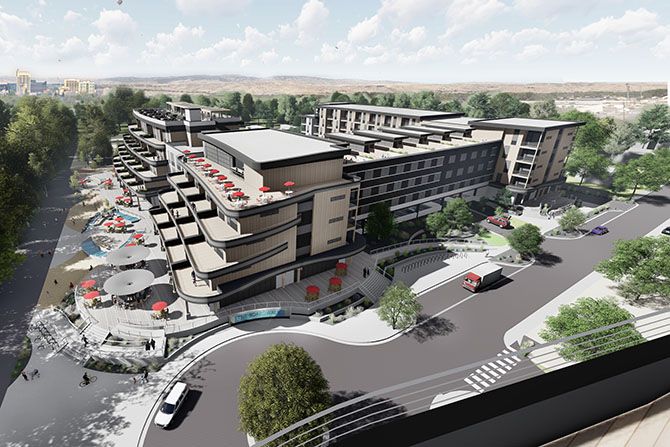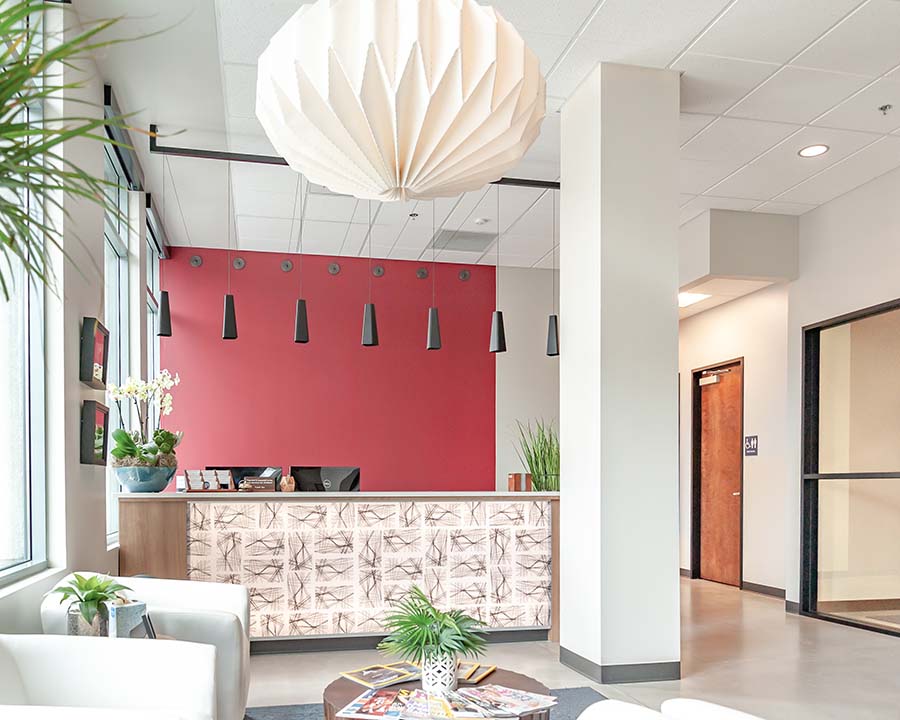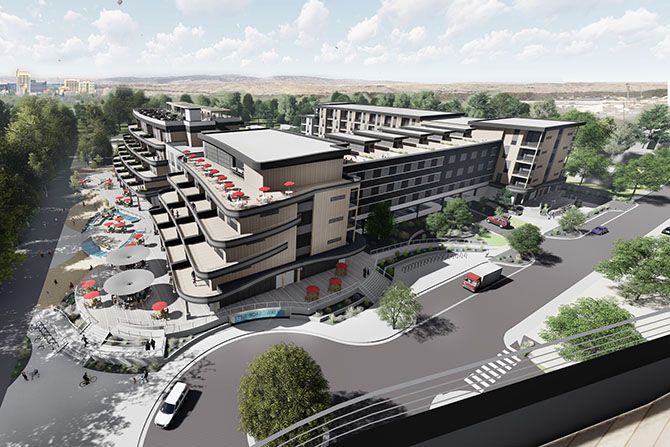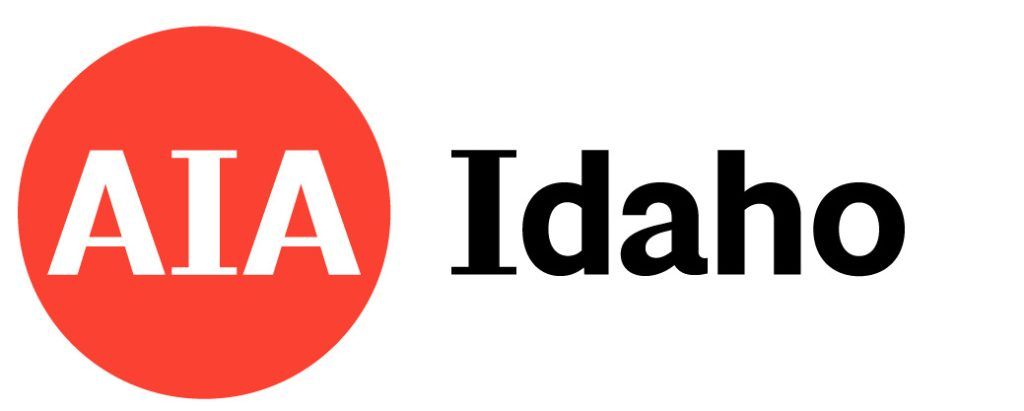As architects, we have amazing resources at our fingertips in the form of standardized model building codes, aimed at establishing the baseline for public safety, health, and welfare. Through the well-informed involvement of our professional association, The American Institute of Architects (AIA), the model code development continues to progress. Inspired by legislation such as the Safe Building Code Incentive Act, model codes are improved with the focus and intent on promoting safer, more resilient building practices and reducing damage and loss of life caused by natural disasters. The same codes are pushing sustainability in the use of materials and systems and reducing energy consumption. The codes are constantly under refinement.
The focus on Life Safety has also evolved the parameters of structure stability and occupant safety to include occupant health and welfare in the forms of environmental characteristics of the created space. Lighting, heating and cooling, ventilation and fresh air, and access to natural daylight continue the trend to healthier designed environments. The holistic approach of AIA and its focus on code development has broadened its advocacy to look at design not just as buildings, but the wider perspective of context and location. Buildings that respond to site context, including linkage with walkable neighborhoods, preservation or creation of green spaces, and public open areas are now recognized to support the health and vitality of occupants in modern buildings. It has been the focus of AIA to constantly inspire its members to reach higher in all aspects of design, advocate and refine model building codes, and enhance community zoning ordinances as we collectively strive to positively change the environment.
AIA has a well-defined position statement on model codes and standards. The AIA Introduction to Codes and Standards identifies the goal of our industry as we continually strive to improve upon the codes in the pursuit of Life Safety, Health, and Welfare, recognizing that the model codes are constantly under scrutiny both in positive and negative perspectives. The organization responsible for writing and modifying building codes in the United States is the International Code Council (ICC). Click the link to read the AIA Introduction to Codes and Standards.
https://content.aia.org/sites/default/files/2016-04/Ind-AIA-Intro-to-Codes-and-Standards.pdf
The ICC is a non-profit organization that develops and maintains a family of model building codes, including the International Building Code (IBC), International Residential Code (IRC), International Energy Conservation Code (IECC), and other codes that address specific types of buildings or building systems. These codes are used as a basis for building codes adopted by states, cities, and other jurisdictions across the United States.
The ICC is composed of building officials, architects, engineers, contractors, and other stakeholders in the construction industry who work together to develop and update the model codes based on the latest research, industry best practices, and input from the public. The organization also provides training and certification programs to ensure that building professionals are familiar with the codes and how to apply them.
ICC is recognized as the leading organization for developing building codes in the United States and is widely respected for its expertise and commitment to improving the safety, sustainability, and resilience of buildings.
The adoption of building codes in Idaho is governed by Idaho Statutes, which provide the legal framework for the state’s building code adoption process. Specifically, Idaho Code Section 39-4103 authorizes the Division of Building Safety to adopt and amend building codes. Under this authority, the Division of Building Safety reviews and proposes changes to the IBC, as needed, to meet the specific needs of Idaho. The proposed changes are then subject to a public hearing process where stakeholders can provide feedback. After the public hearing process, the Idaho Building Code Board reviews and approves the proposed changes before they become part of the state building code.
The Idaho Legislature has the role of final approval of the rules and stands as the final step before the formal adoption of building codes. However, the Legislature may pass laws that impact the building code adoption process, such as laws that require specific building standards or that affect the Division of Building Safety’s authority to adopt and amend building codes.

Photos courtesy of erstad Architects

In 2022, the Idaho Department of Professional Licensure (DOPL) undertook a review of the 2018 IBC and the 2018 IRC under the Governor’s goal of reducing regulations and requirements that might be considered unnecessary or redundant and to streamline regulatory processes, reduce the regulatory burden on businesses and individuals, and improve the overall efficiency of both codes.
DOPL identified a group of industry representatives familiar with the utilization and implementation of the codes. Representatives included Building Officials, Code Officials, Architects and Engineers, and professional organizations such as the Building Contractors Association, the Associated General Contractors, and AIA. The intent was to establish a collaborative effort as DOPL started the zero-based regulation (ZBR) review. Simply stated, the purpose was to streamline provisions of the IBC and IRC, reduce regulations while still protecting public health, safety, and welfare, and minimizing unnecessary burdens on individuals and businesses. The effort was to identify regulations that were redundant or overly burdensome and to consider whether alternative approaches might be more effective.
The AIA Idaho’s Advocacy Committee was one of the participants in the process and chose to be engaged in the reviews, provided feedback to the suggested changes, and in many cases, argued successfully for the replacement of sections identified for removal. In the AIA’s Introduction to Codes and Standards, it recognizes processes such as this as part of code evolution.
The most scrutinized aspects in the codes were the provisions of energy conservation. The 2018 IBC contains several energy conservation provisions aimed at reducing the energy consumption of buildings.
Some of the key provisions include:
- Building Envelope Requirements establishing building envelope design and construction, including insulation, air leakage, and fenestration. These requirements are designed to reduce the amount of energy lost through the building envelope.
- HVAC Requirements for HVAC systems, including minimum efficiency standards for equipment and ductwork, and requirements for air distribution systems. These requirements are intended to reduce the energy consumption of HVAC systems.
- Lighting Requirements for lighting systems, including minimum efficiency standards for lamps and ballasts, and requirements for automatic lighting controls. These requirements are designed to reduce the amount of energy consumed by lighting systems.
- Renewable Energy provisions for the use of renewable energy systems, such as solar panels and wind turbines. These provisions encourage the use of renewable energy sources to reduce the overall energy consumption of buildings.
- Commissioning Requirements for building commissioning, which involve verifying that building systems are operating as designed and ensuring that energy-consuming systems are operating efficiently.
The energy conservation provisions of the 2018 IBC set minimum standards for building design and construction and are designed to reduce the energy consumption of buildings while promoting the use of energy-efficient and renewable energy systems.
In tandem with the advancement of the IBC, AIA has supported the establishment in 1998 of the International Energy Conservation Code (IECC), a model energy code that sets minimum standards for the energy efficiency of buildings. The IECC includes requirements for specific levels of insulation, air sealing, and lighting efficiency that are not included in the IBC. Additionally, the IECC includes requirements for mandatory blower door testing to measure a building’s air leakage rate, which is not required by the IBC. Idaho has adopted modified versions of both the 2018 IECC for Residential and the 2015 IECC for Commercial buildings.

Photo courtesy of erstad Architects
While there is some overlap between the two codes, the IECC has more specific and detailed energy efficiency requirements than the IBC. Both codes contain provisions related to energy conservation, the IECC is more focused on energy efficiency and includes more specific requirements for achieving energy savings in buildings.
Why is this important in our industry? According to the U.S. Energy Information Administration (EIA), buildings (residential, commercial, and industrial) account for approximately 40% of total energy consumption in the United States. This includes energy used for heating, cooling, lighting, and powering appliances and electronics.
The energy consumption of buildings in the United States is considerable and has a significant impact on the environment, including greenhouse gas emissions and air pollution. As a result, improving the energy efficiency of buildings is a key strategy for reducing energy consumption and mitigating the environmental impact of buildings. This can be achieved through the use of energy-efficient building designs, materials, and technologies, as well as through changes in behavior and building management practices.
With this background, one of the most challenging aspects of the ZBR process was DOPL’s evaluation and proposed edits of the energy provisions in both the IBC and IRC. While the state has adopted highly edited versions of the IECC as the statewide energy code, many of the current provisions have been overwritten with less restrictive provisions found in previous versions of the IECC.
At the end of the 2022 DOPL efforts, it became apparent that the process met with such resistance and lack of consensus that it was ceased. We believe that the effort will reemerge this spring with a renewed focus on a truly collaborative effort between all parties. Each one of us should be engaged in the process of modifying our model codes. Our professional knowledge and experience is exceptionally valuable and should be relied upon in the process of code modifications.
As architects, we are asked to interpret our model building codes as they impact the built environment. We have leadership from our professional association, the American Institute of Architects, with well-crafted position statements that help guide us when navigating code revisions. The same support encourages us to take the long position when advocating for proactive code modifications in support of life safety, health, welfare, and energy conservation language. As architects, we are empowered to think bigger than just the codes, to strive to raise the bar, and to educate our clients to follow pursuit. As the DOPL ZBR process resumes, get involved, be heard, and advocate for the future.









